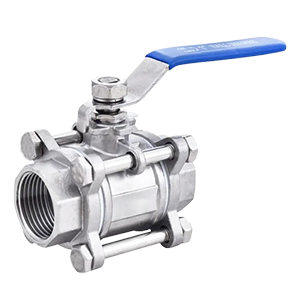In the marine industry, reliability and safety are non-negotiable. Every component—especially valves—must perform consistently under harsh environmental conditions. Among various valve types, ball valves stand out for their compact design, simple operation, and excellent sealing performance. But with many materials and configurations available, how do you choose the right ball valve for ship use
1. Consider the Marine Environment
Marine environments are among the most challenging conditions for any mechanical equipment. Saltwater, humidity, vibration, and temperature fluctuations can accelerate corrosion and wear.
Therefore, the first step is to select a valve material that can resist corrosion and maintain long-term durability:
-
①Bronze Ball Valves – Excellent corrosion resistance in seawater; ideal for seawater pipelines, ballast systems, and cooling systems.
-
②316 Stainless Steel Ball Valves – Superior corrosion resistance and mechanical strength; suitable for high-pressure and chemical systems.
-
③Brass Ball Valves – Cost-effective for freshwater or non-seawater applications but not recommended for direct seawater use.
2. Choose the Appropriate Connection Type
Connection type determines how the valve integrates into the ship’s piping system. The most common options are:
-
①Flanged End Ball Valves – Offer strong mechanical connections and easy maintenance. Best for larger pipelines and high-pressure systems.
-
②Threaded (Screwed) Ball Valves – Compact and ideal for smaller diameter pipes and low-pressure systems.
-
③Welded End Ball Valves – Provide leak-free connections for permanent installations, often used in critical systems.
When reliability and ease of disassembly are priorities—such as in cooling or seawater systems—flanged ball valves are typically preferred.
3. Identify the System Pressure and Temperature
Marine systems operate under varying pressures and temperatures. Selecting the right pressure rating ensures safe and stable operation.
-
①PN16–PN40 ratings are commonly used in marine applications.
-
②For high-pressure fuel or hydraulic systems, stainless steel valves rated above PN40 are recommended.
In addition, consider temperature resistance if the valve is used in engine rooms or near heat exchangers.
4. Select the Right Valve Design
The valve’s internal design determines its sealing performance, flow characteristics, and suitability for certain fluids.
-
①Full Bore Ball Valves – Provide unrestricted flow, reducing pressure loss. Ideal for systems where efficient flow is critical.
-
②Reduced Bore Ball Valves – Compact and cost-efficient for general service.
-
③Floating Ball Valves – Common for small- to medium-size pipes, offering tight shutoff.
-
④Trunnion-Mounted Ball Valves – Designed for large sizes and high-pressure systems, ensuring stable sealing performance.
For ship systems where flow efficiency and sealing reliability are crucial, full bore floating ball valves are the most commonly used type.
5. Check for Marine Certifications
When operating at sea, compliance is essential. Always choose valves certified by recognized marine authorities, such as:DNV (Det Norske Veritas).LR (Lloyd’s Register) and ABS (American Bureau of Shipping).These certifications ensure the valve meets marine quality, material, and performance standards.
6. Prioritize Easy Maintenance and Operation
Marine systems require valves that are easy to operate and maintain, even in confined spaces.Ball valves are favored because they provide:
-
①Quick quarter-turn operation
-
②Compact structure for tight installation areas
-
③Minimal maintenance requirements
For convenience, consider ball valves with locking handles or gear operators for added safety and control.
Choosing the right ball valve for ship use depends on a combination of factors—material, connection type, pressure rating, design, certification, and maintenance convenience.At Qingdao I-Flow, we supply a wide range of marine-grade ball valves certified by DNV, LR, and ABS, designed to deliver outstanding performance in shipboard systems. Whether for seawater pipelines, cooling circuits, or fuel lines, our valves ensure safe and efficient operation at sea.
Post time: Oct-27-2025

